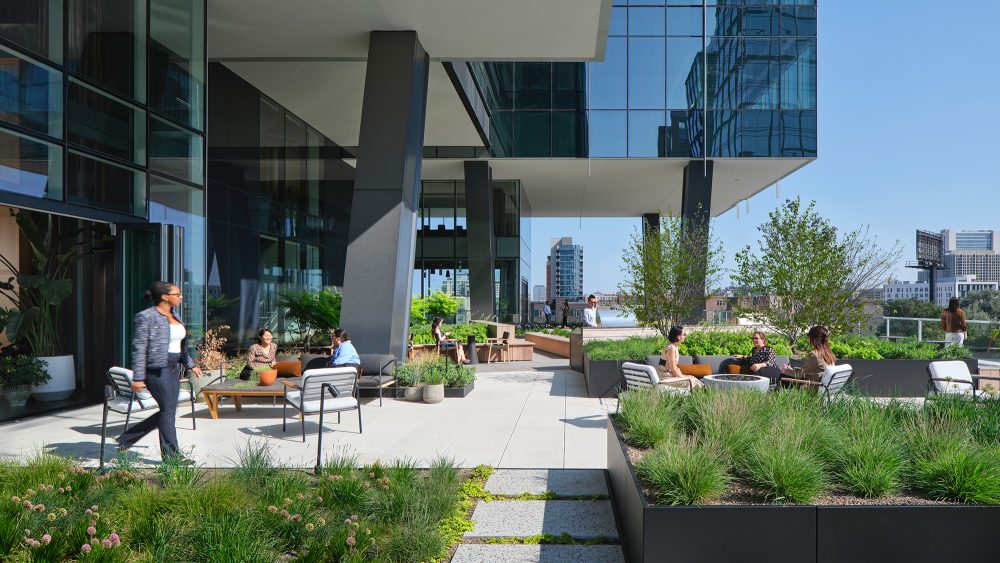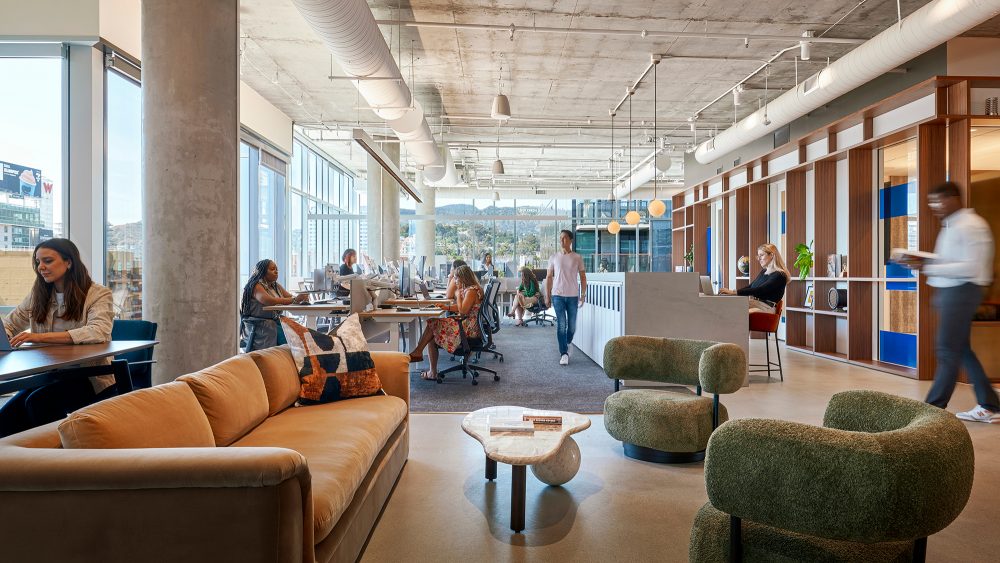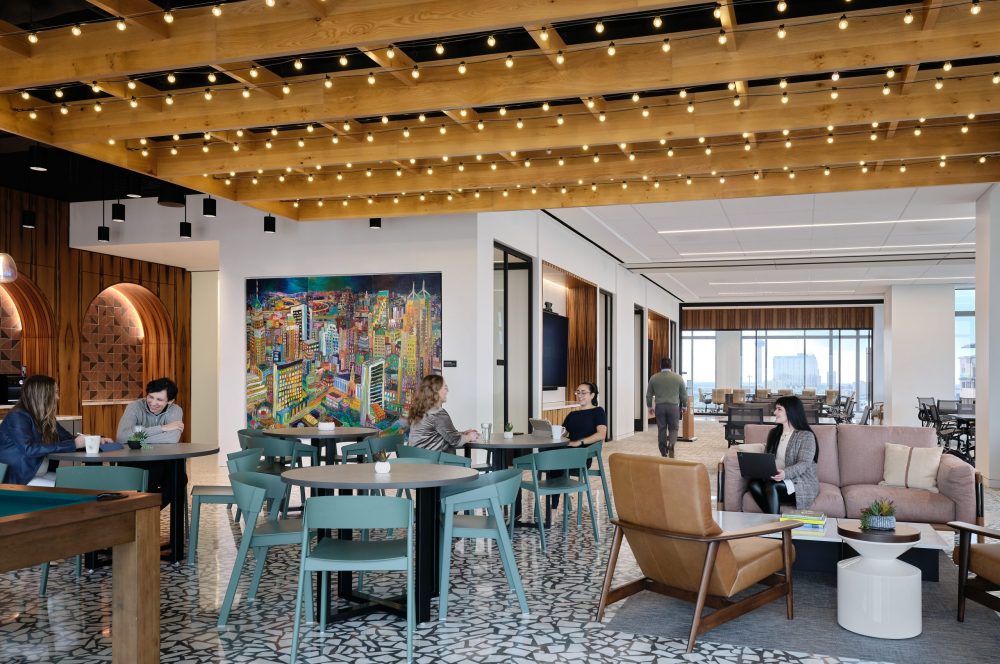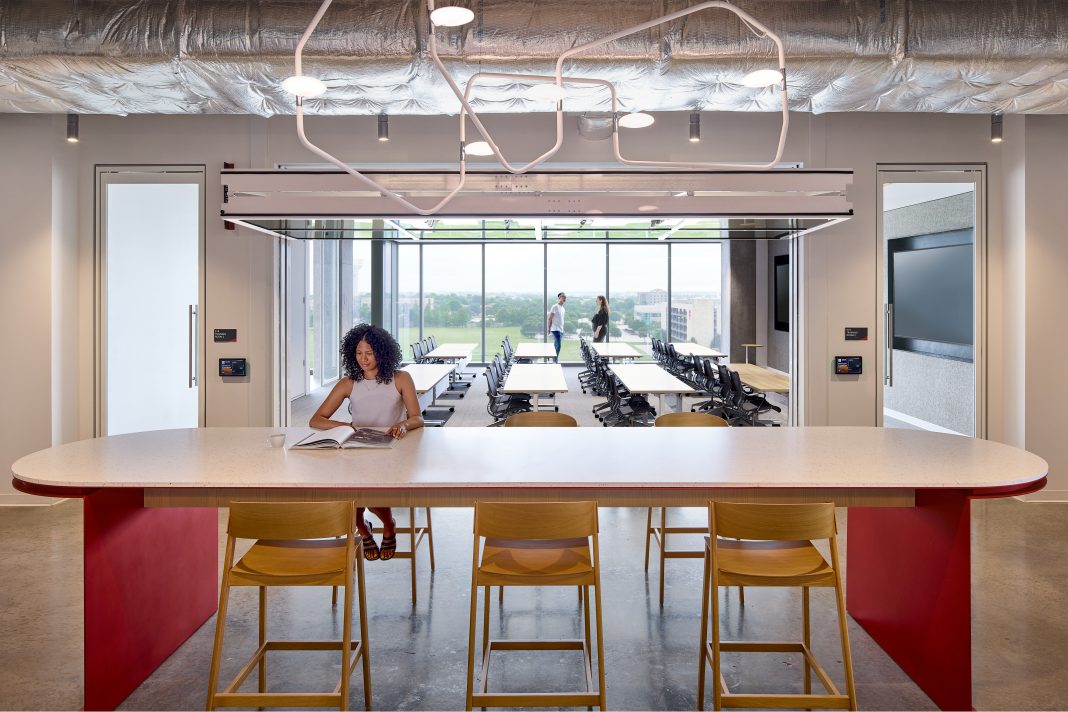Adaptable furniture and modular walls continue to evolve with solutions that embrace the workplace with a purpose and drive impact into all types of work throughout a typical day.
From law firms to technology clients, we see the workplace embracing flexible furniture and architectural elements at all levels no matter the type of business or industry. While flexible furniture and demountable walls are nothing new to the design industry, it is important to remember that as these products continue to evolve that we must ensure the workspaces that we design are not just adaptable but intentional to the user.
Workplace Design Rooted in a Human-Centric Approach
Putting mobile furniture in a large area to create flexibility and division of space in a sea of workstations may not be a true solution and could negatively affect a project’s budget if thought is not given to its purposefulness for all user types. It’s critical to understand the user needs for the space to be truly dynamic. Workplaces and their users have evolved beyond just creating a flexible environment using furniture.
In Gensler’s Global Workplace Survey 2025 findings we found the following key insights:
- Workplaces have not kept pace.
- People are craving new experiences.
- Great workplaces enable in-person work.
Employees want to move past the corporate workplace experience and business-like settings to natural, creative, and residential environments. They want tranquil experiences that feel connected to nature, with the ability to work outdoors, and dynamic experiences that feel experiential and imaginative. Spaces that cater to making connections, support productivity, and enhance well-being are important to employees, both on-site and near the workplace.

Many of our clients want to offer a variety of experiences for their users. They view spaces as more than just a place to work, it’s a compelling destination that provides a blend of experiences for employees to be alone, collaborate with others, and to build relationships.
A recent project we completed for a financial services firm took the approach of addressing flexible furniture spaces by creating a multi-functional, multi-use space approach. The furniture consisted of a large high top meeting table with counter stools which sounds straight forward on the furniture, but it sits in the center of an area that has a large screen on one wall, full height whiteboard running along the corridor and technology in the table. The location is within workspace, but architectural walls create a noise division so this space can be an innovative lab area or a buttoned-up conference space, or an area to meet and collaborate.
Another notable example to support this mindset is a project for a professional services firm. The space was designed with the usual demountable wall zones and workstations. We had collaborative open zones that used distinct types of furniture to support choice and flexibility.

Fast forward seven years and the client is now a Fintech company that needs to take their business from an in-person company that provides a service to its clients, to create technology that provides a more crucial niche to their processes for doing business.
While truly a unique situation, they now want to remove seldom used workstations with a more purposeful and impactful space to gather and create. Focus work is now an at home task and the workplace is a destination. They are not the first organization to embrace a new way of work by using adaptable furniture and modular walls to create these new environments.
Additionally, as part of a furniture prototype for a global client, we created a full floor plate of new types and ways to work using furniture with the intent to create enthusiasm, improve the workplace and increase adaptability. This company, like many, has recently changed its policy to being in the office at least four days a week. While rooted in furniture solutions, it was more than just the furniture. Our approach began with a discovery and research process that evolved into a combination of qualitative and quantitative data to inform our design direction. Each input by the users offered unique insights on how to transform the future of their workplace.
This model was part of a larger headquarters that allowed engagement of current large break areas and corridor moments to evolve into an area that provided much more utilizing flexible furniture solutions. The most popular of these being individual phone booths that allow users to take meetings away from their area but in a quiet space. These areas that were once common corridors are now a destination users want to use.
Looking Beyond the Interior
Another key to designing attractive spaces for today’s users is to not limit workspaces, but to encourage the use of surrounding neighborhood amenities, convening in nearby parks or rooftops, and socializing in the neighborhood coffee shop or café — as these are often the preferred places for mentorship, unplanned meetings or socializing. JLL research shows that properties that incorporate a diverse roster of amenities will experience 12% higher demand from tenants versus their plain commodity counterparts.

What the Future Holds
The value of the workplace goes beyond work — it’s a place for employees to gather for a shared goal. Employers should engage employees to understand what experience matters most and create them together.
When employees are given spaces that feel personal, flexible, and emotionally engaged, whether that is through nature retreats, creative labs, or hospitality-inspired environments, it not only strengthens job satisfaction but also long-term engagement, innovation, and loyalty.


